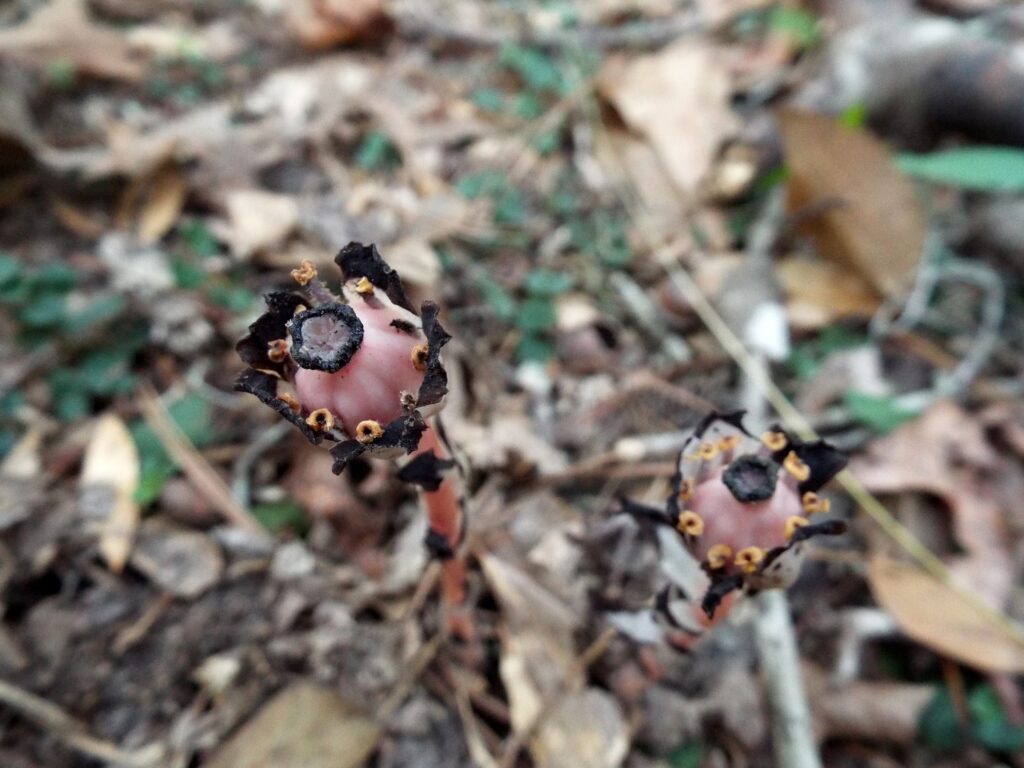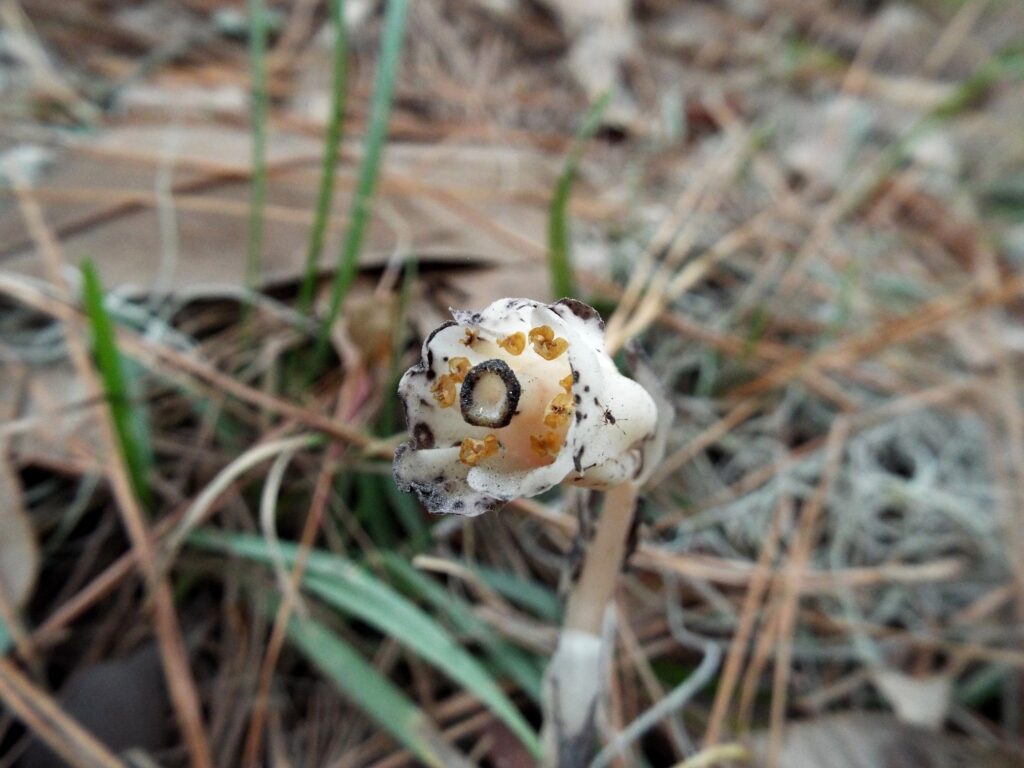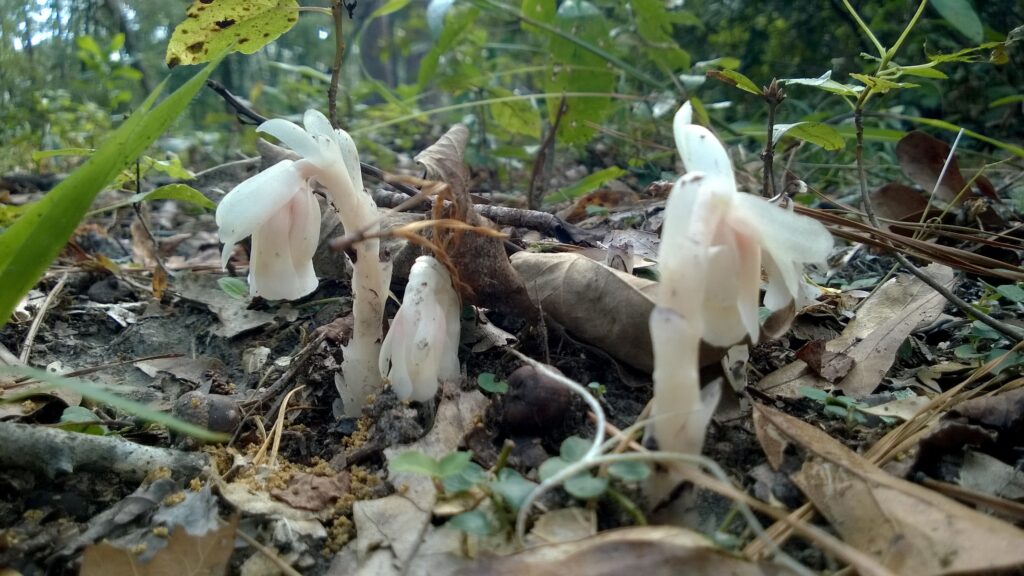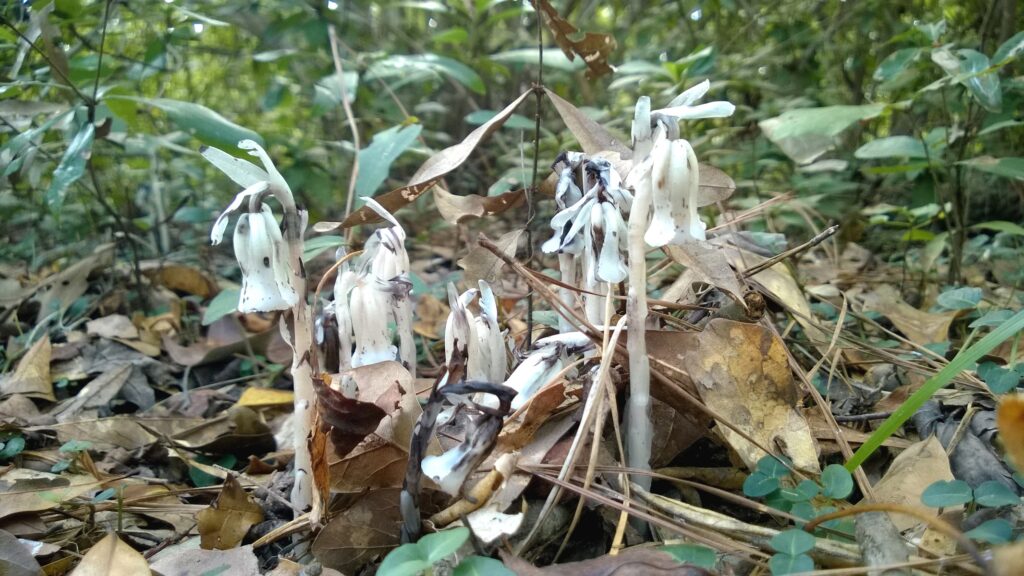






This week for Flora and Fauna Friday, in celebration of Halloween, we’ll be talking about a ghostly vampire of the forest understory. An ephemeral hand of an unlikely parasite that pushes its way into our realm of view every Halloween season. Today we’re looking at the Indian Pipe (Monotropa uniflora).
The Indian Pipe is a member of the Heath family, Ericaceae. This is the family that Azaleas, Rhododendrons, Blueberries, and Mountain-laurels belong to. This family is known for its evergreen shrubs with pinkish, bell-shaped flowers. Indian Pipes possess the latter but the former is nowhere to be seen. That’s because Indian Pipes are a subterranean, nonphotosynthetic, achlorophytic, parasitic, myco-heterotrophic angiosperm. In other words, they’re a flowering plant that lives completely underground and feeds by stealing nutrients and sugars from soil fungi, instead of photosynthesizing. They bloom in mid fall, right around the end of October. This is the only time they’re visible to us.
Now, let’s go in depth on how Indian Pipes go about parasitizing their host. First we need to talk about mutualistic mycorrhizal associations. A mycorrhizal association is a partnership between a plant and a soil fungus where both organisms benefit. So what does each stand to gain? The plant gains increased access to mineral nutrients. The fungus is rewarded with sugars. Why form a partnership? Soil fungi are excellent at breaking down organic matter and mineral deposits in the soil, in order to have access to the mineral nutrients within them. This requires some complicated biochemistry, microscopic body structures, and a lot of calories. Thus, fungi need to seek out and breakdown organic material that’s high in calories in order to keep themselves fed. Plants are excellent at turning water, air, and sunlight into raw sugars. However, their rigid cell walls and vascular structures restrict how efficiently they can pull available mineral nutrients out of the soil. On top of that, they’re not able to access most of the nutrients that are locked away in soil organic matter. So, plants and fungi have allied and the two prosper because of it. The plant has access to more mineral nutrients and the fungus has a steady and dependable supply of calories. This sort of alliance is most fruitful in trees and shrubs due to their high demand for nutrients and high photosynthetic output. The fungi will form a sheath around the roots of a plant or sometimes embed itself within the skin of the plant’s roots.
Indian Pipes cheat this alliance by parasitizing the fungus in a mycorrhizal association. The fungus provides the Indian Pipe with mineral nutrients but instead of rewarding the fungus with sugars, the Indian Pipe steals the sugars the fungus was given by its partner. The fungus, as a result takes more sugars from the tree to make up the deficit. So really, the Indian Pipe is parasitizing both a fungus and, indirectly, the plant. This theft is so efficient that the Indian Pipe has completely lost the ability to produce chlorophyll, the pigment that allows photosynthesis. This leaves their flesh a ghastly white and their flowers with only a faint wash of red.
This Indian Pipe was parasitizing on the roots of an exotic Azalea. They seem to prefer hardwoods in our area. Indian Pipes are not alone in this lifestyle. They have a sister species known as Pinesap (Monotropa hyopitys) that specialize in hosting on Pines. Many species of Orchid will do the same. If you’re wandering the autumn forests or traversing the haunted woods this Halloween, you may stumble onto these pallid vampyric fingers rising from beneath the Earth to pierce the shadow soaked forest floor.